Chapter 1 | THE HUMAN FIGURE AS A 3D SHAPE
In this chapter you will learn a few ways to give a drawn human figure more mass and volume.
TORNADO FIGURES / ‘TWISTERS’
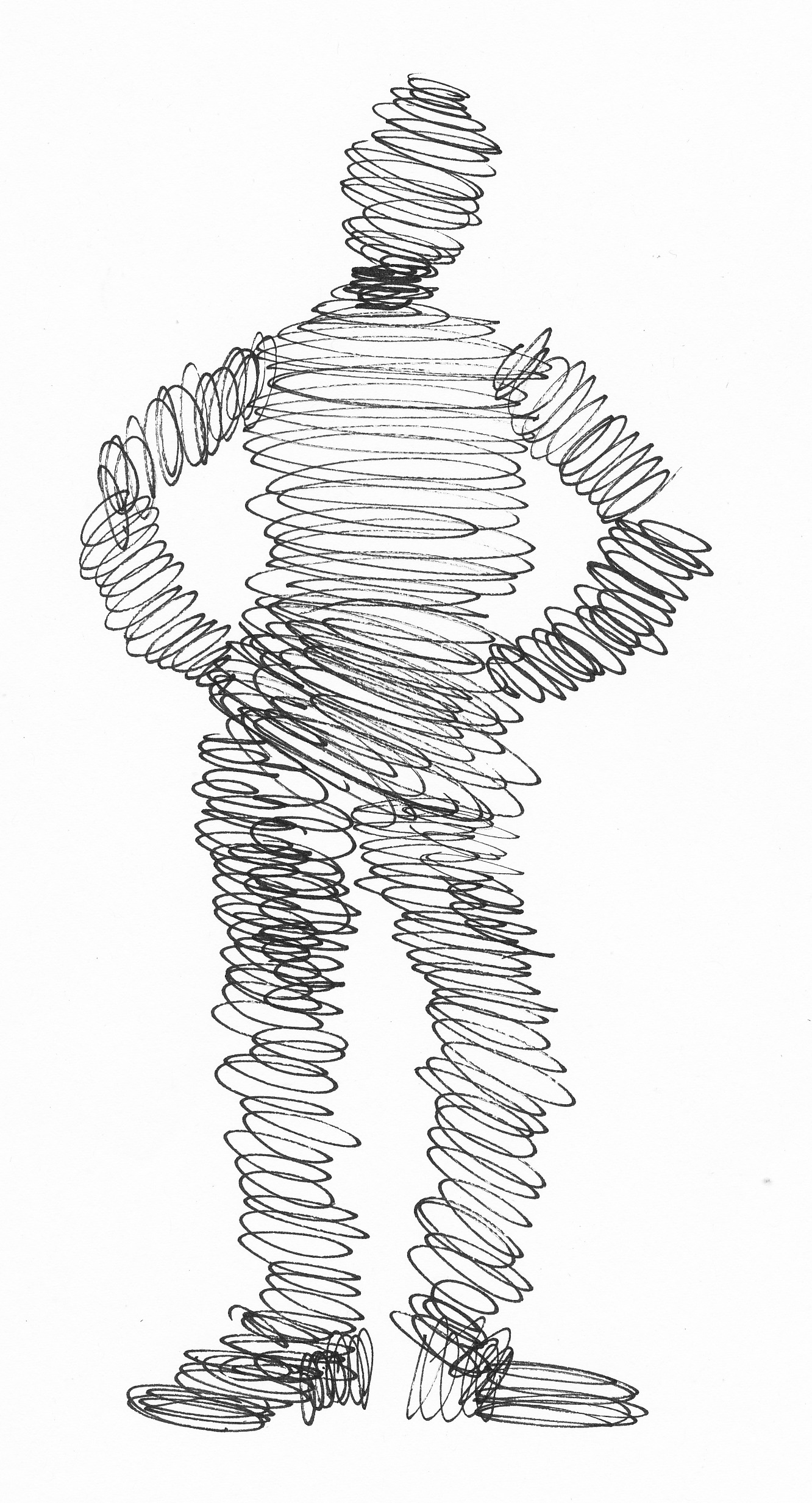
Drawing tornado figures (I call them ‘Twisters’) is an excellent and fun exercise to learn how to approach the human figure more like a 3D shape. All body parts consist of helixes (image) resulting in a lack of a clear outline and no longer a clear front, side and back. You can draw helixes smoothly in a continuous movement, if possible without letting go of the paper. It doesn’t have to be tight at all! Due to the way of drawing Twisters seem made of iron wire or whirlwinds. Twisters are very flexible, so you can easily come up with all kinds of poses with them.
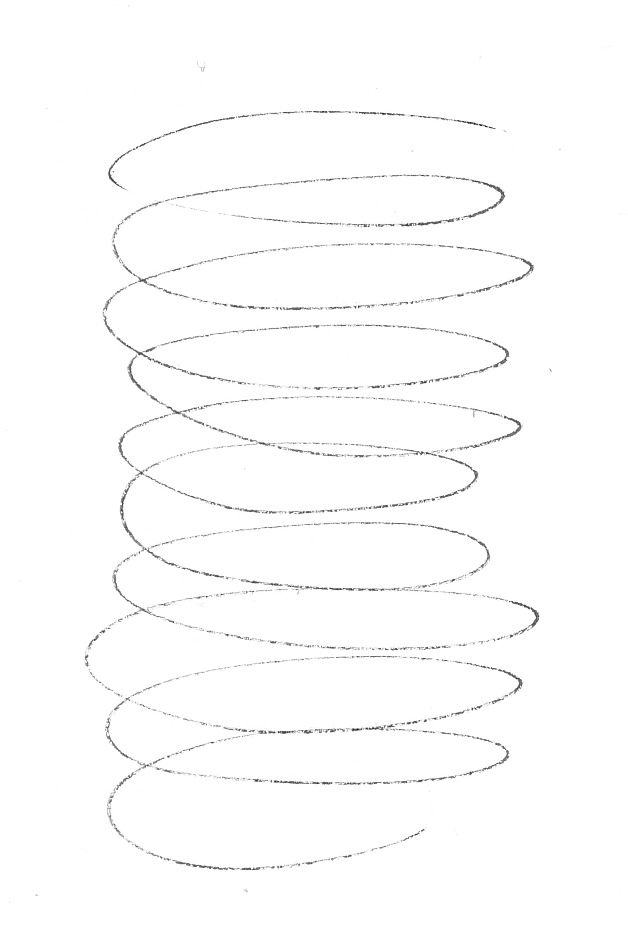
Exercise 1: Draw some Twisters in different poses.
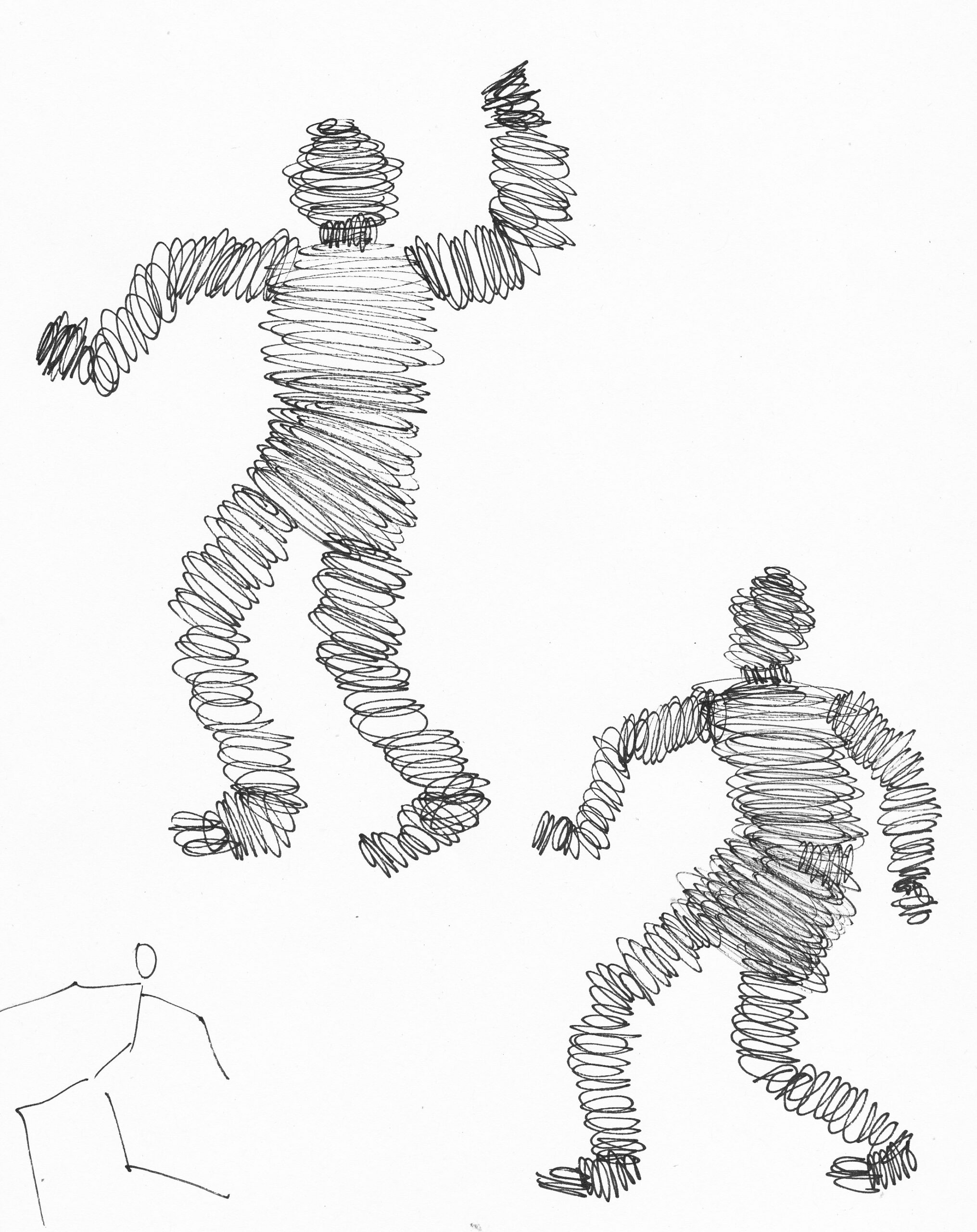
Exercise 2: Give a drawn Twister of at least 10 cm. high mass by means of shadow lines. With each line try to follow the curves of the helix lines and do not draw an outline. In this example the light comes from the left.
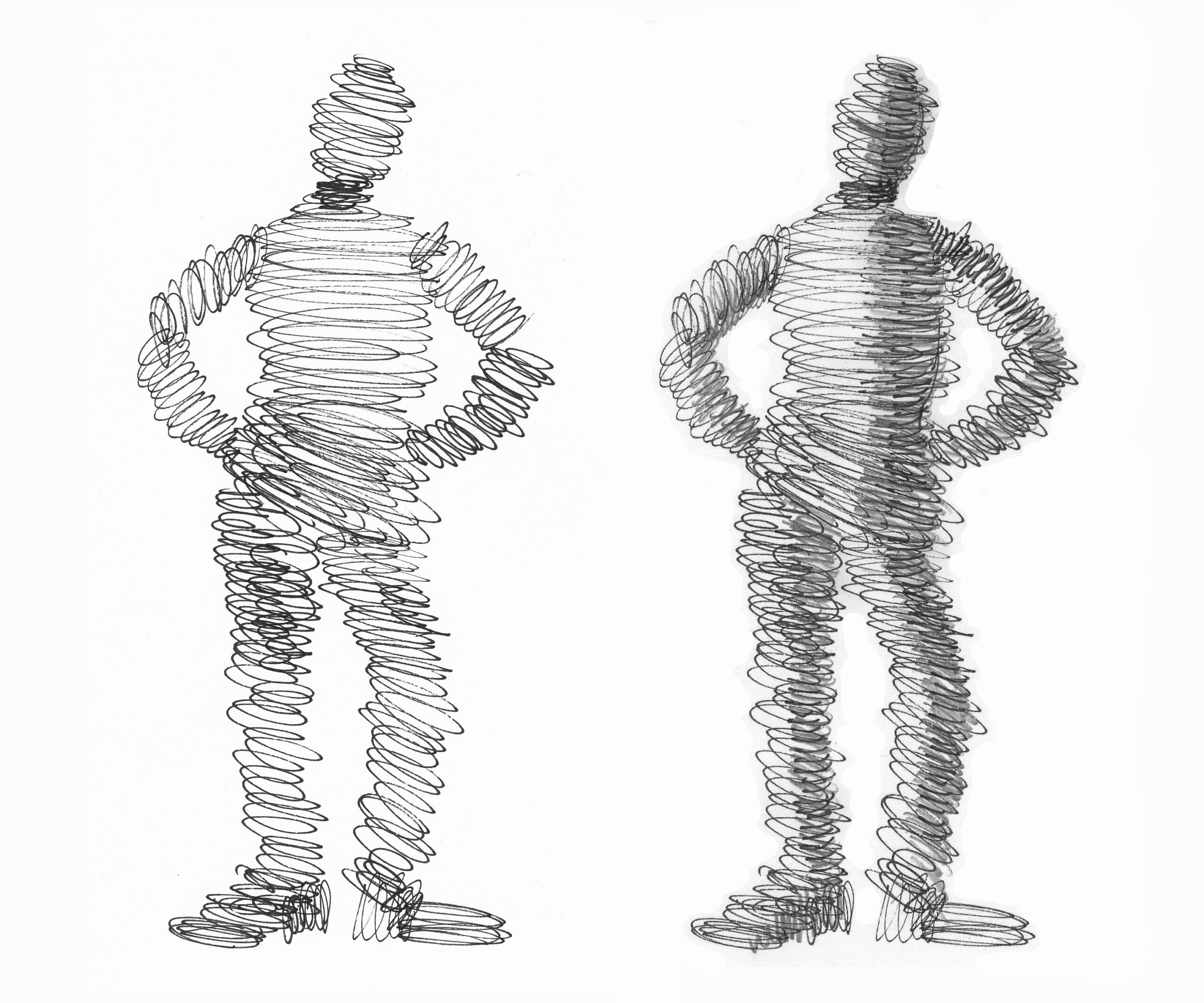
In the next two models, only part of the helix lines/ovals are still visible. The lines over the body show the volume and curves of the arms, legs and torso very well. They also show whether an arm or leg is moving towards us or away from us.
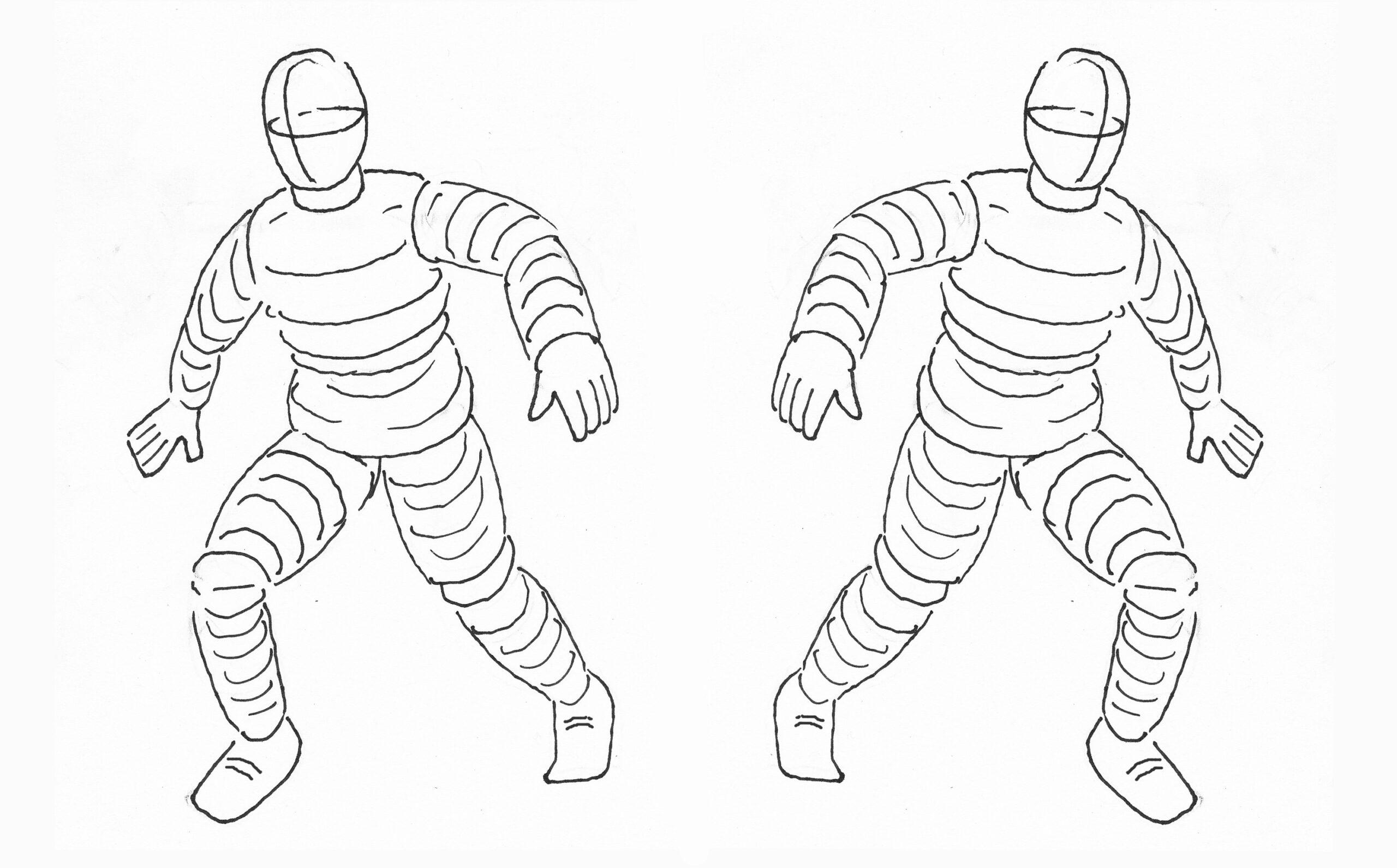
Exercise 3: Copy one of the two figures. Make sure all the lines follow the curve of the limbs.
THE USE OF SHADOW
With shadow you can further enhance the volume of the model. All shadow stripes/hatching follow the curves of the body. Pay attention to the different directions of the side light, resulting in own shadows and drop shadows.

Exercise 4:
Choose one of the four figures to copy. The direction of the hatching (shadow lines) again follows the curves of the lines that were already there. In this way, the hatching also contributes to the 3D effect. On the light side, make the lines a bit lighter with an eraser. Finally, a bit of drop shadow ensures that the figure appears to touch the ground.
Tip: you can also download and print the model from exercise 3 to continue practicing with shadows only.